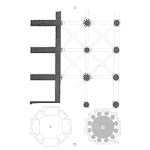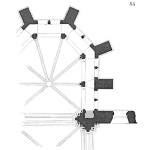
Is Meeting the Standard Enough?
Abstract
Carl and Fred discussing a question: is meeting regulatory standards sufficient to ensure a product is safe and reliable?
ᐅ Play Episode
Your Reliability Engineering Professional Development Site
Author of Inside FMEA articles, FMEA Resources page, and multiple books, and a co-host on Speaking of Reliability.
This author's archive lists contributions of articles and episodes.

Carl and Fred discussing a question: is meeting regulatory standards sufficient to ensure a product is safe and reliable?
ᐅ Play Episode
by Carl S. Carlson Leave a Comment

FMEAs take time and cost money. They should be done when a certain level of risk can be effectively addressed by the FMEA procedure. Preliminary Risk Assessment is a procedure that uses company-determined criteria to select which FMEAs to do.
“The key is to schedule your priorities.” ― Steven Covey
by Carl S. Carlson Leave a Comment

Carl and Fred discussing risk-identification tools, one of the four categories of reliability tools.
ᐅ Play Episode
by Carl S. Carlson Leave a Comment

Carl and Fred discussing the unique set of reliability tools that can be used to improve the manufacturing process.
ᐅ Play Episode
by Carl S. Carlson Leave a Comment

Carl and Fred discussing the vast array of reliability tools, and the importance of selecting the vital few most important tools for a given reliability program.
ᐅ Play Episode
by Carl S. Carlson Leave a Comment

Carl and Fred discussing the life-long path of learning, which includes understanding the lessons from past mistakes.
ᐅ Play Episode
by Carl S. Carlson Leave a Comment

Carl and Fred discussing the process of developing a reliability plan and how it should begin with the reliability vision, followed by identification of gaps.
ᐅ Play Episode
by Carl S. Carlson Leave a Comment

There is no more important task in an FMEA than correctly identifying the “Cause.” Finding the root cause is the heart and soul of FMEA procedure. When you have the right cause, it opens the door to solutions. When you have the wrong cause, nothing gets accomplished.
By continuing to ask “why,” the team will be able to discover the progression of cause-and-effect relationships behind a problem and the root cause that is below the surface.
Wisdom begins in wonder – Socrates
by Carl S. Carlson Leave a Comment

Carl and Fred discussing how to utilize the knowledge of failure mechanisms to improve reliability in product designs. How much knowledge should you have?
ᐅ Play Episode

Carl and Fred discussing the importance of considering the capability of a company from a reliability point of view and developing the tasks in a reliability plan.
ᐅ Play Episode
by Carl S. Carlson Leave a Comment

The rule is simple. For high-risk issues, the FMEA team needs to properly identify the cause(s) and associated failure mechanism(s). So, what exactly is a failure mechanism?
“Nature never breaks her own laws.” Leonardo da Vinci
by Carl S. Carlson Leave a Comment

Carl and Fred discussing the broad subject of risk, focusing on the concept of acceptable risk.
ᐅ Play Episode
by Carl S. Carlson Leave a Comment

Carl and Fred discussing the time it takes to do an FMEA, and how to shorten the in-meeting time, while increasing the quality of results.
ᐅ Play Episode
by Carl S. Carlson Leave a Comment

By prepopulating the highest priority functions, along with other selected information, the FMEA team can focus their efforts on the most important functions, and minimize in-meeting time. This is the last step in FMEA preparation. However, there are specific limitations to FMEA prepopulation that must be understood and adhered to.
“Give me six hours to chop down a tree and I will spend the first four sharpening the axe.”
Abraham Lincoln
by Carl S. Carlson Leave a Comment

Carl and Fred continuing to discuss the subject of integrating reliability within a very fast product development timeline.
ᐅ Play Episode